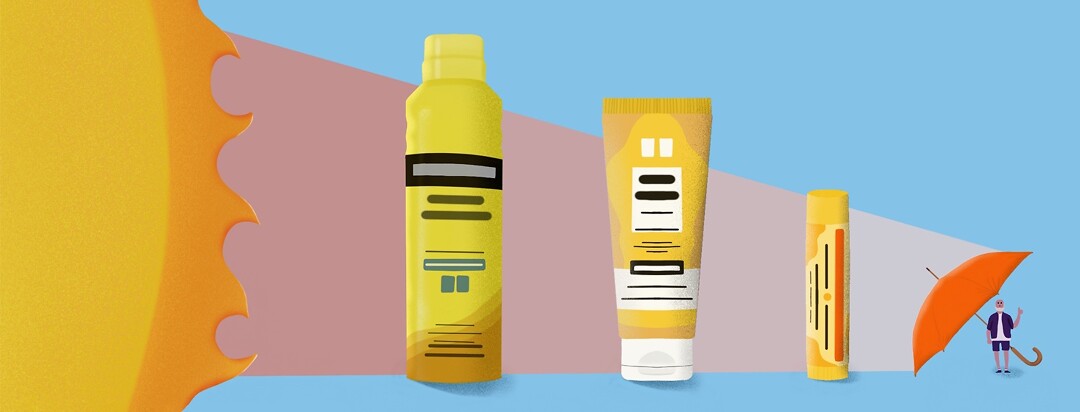The Role of Sunscreen for Myasthenia Gravis
As the warmer and sunnier days approach, it is time to be mindful of how the sun’s rays impact our bodies. Some people with myasthenia gravis (MG) are particularly at risk of the sun’s harmful effects.
This is due to the various immunomodulating medicines that people with myasthenia gravis may be taking, such as mycophenolate mofetil (Cellcept) and azathioprine. Such medicines can increase the risk of skin cancers. This is where the role of sunscreen comes into play for people with MG.
What is the risk?
The risk of skin cancer varies depending on the type of immunomodulating drug used to treat myasthenia gravis. For example, mycophenolate has a risk of skin carcinoma and non-melanoma cancer.1 The risk of skin cancer with these drugs is related to the dose and duration of therapy.
Generally, people on these drugs are recommended to limit exposure to sunlight. Also, your skin will be closely monitored by your physician to assess for potential lesions while on therapy.
Reducing the risk of skin cancer
We have known for quite some time that the sun's rays can impact the skin negatively. The following tips can help to reduce the risk of skin cancers:
- Avoiding sunlight or tanning beds
- Wearing protective clothing
- Wearing SPF sunscreen
- Regular skin checks as recommended by your doctor
Sunscreen does not provide 100 percent protection against the sun’s harmful rays; it should always be used in addition to the above list. However, there is evidence that wearing sunscreen reduces the risk of squamous cell carcinomas by as much as 40 percent.1
Despite the published evidence supporting sunscreen use, wearing sunscreen is still not a common practice. One study in the United States surveyed 4,000 adults and found that only 14 percent of men and 30 percent of women apply sunscreen when they are exposed to the sun for greater than one hour.3
Choosing the right Sunscreen
There are various factors to take into account when choosing the right sunscreen including the sun protection factor, spectrum, and water resistance.
Sun Protection Factor(SPF)- The current recommendation is to use a sunscreen with a SPF of at least 30.4
Spectrum– Look for the word “broad spectrum” on your sunscreen – this indicates that it protects against all types of sun rays.
Water resistance– Water-resistant sunscreens maintain protection for 40 minutes in water or 80 minutes when sweating. It is not necessary to use these types of sunscreens day-to-day. However, they can be used for outdoor activities that involve sweating and/or exposure to water.5
The teaspoon rule
No matter the brand or formulation of the sunscreen you opt for, ensure that you are applying enough. It may be helpful to remember the “teaspoon rule” during your sunscreen application. Consider these guidelines and apply the following amounts:6
- 1 teaspoon to the face and neck
- 2 teaspoonfuls to the back and front
- 1 teaspoon to each arm
- 2 teaspoons to each leg
Do you use sunscreen on a daily basis to help protect your skin? If so let us know which brand is your go-to product. Share your experiences by commenting below!

Join the conversation